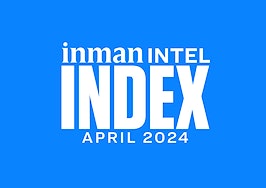Homebuyers have yet to wither in the face of relentless home price increases, leading Fannie Mae economists to “meaningfully upgrade” their projections for existing homes sales in the last half of the year.
While demand for homes remains strong, there’s no sign of relief on the supply side, and listing shortages are expected to continue to drive up home prices and dent sales of existing homes in 2022, Fannie Mae forecasters predict in their October Economic and Housing Outlook.
Mortgage rates have been on the rise as the Federal Reserve prepares to start withdrawing the support it’s provided to mortgage markets later this year. But Fannie Mae economists aren’t anticipating a rapid runup in rates, and see listing shortages and rising prices as the greater impediment to home sales.
Fannie Mae and MBA mortgage rate forecasts

Historic (through Q2 2021) and projected (Q3 2021 and beyond) rates for 30-year, fixed-rate mortgages. Source: Fannie Mae, Mortgage Bankers Association forecasts.

Doug Duncan | Photo credit: Fannie Mae
“Mortgage rates may rise in response to the tighter environment, but we expect the severe shortage of homes for sale to remain the primary driver of strong house price appreciation through at least 2022, limiting interest rate effects on home sales and home prices,” said Fannie Mae Chief Economist Doug Duncan, in a statement.
Fannie Mae forecasters do expect Fed policymakers will announce a timetable for tapering the Fed’s purchases of mortgage-backed securities at their next meeting, in November. But they’re projecting only a modest rise in mortgage rates, with 30-year fixed-rate mortgages averaging 3.3 percent in 2022.
That’s up from 3.1 percent in September’s forecast, but other forecasters are more pessimistic about the prospects of a rapid runup in rates. In a September forecast, economists at the Mortgage Bankers Association projected that rates on 30-year fixed-rate loans will rise to an average of 4 percent by the final quarter of 2022.
Fannie Mae forecasters have taken a more pessimistic view on how long it will take to resolve ongoing supply chain disruptions that have slowed economic growth. They now think the economy will grow by 4.9 percent this year, down from September’s projection for 5.4 percent 2021 real gross domestic product (GDP) growth.
An unexpected jump in August pending sales — combined with recent strength in mortgage applications data, and a reassessment of the number of homes purchased without a mortgage — drove the more optimistic projections for 2021 home sales.
New and existing home sales

Annual sales of new and existing homes. 2021 and 2022 are projected. Source: Fannie Mae Economic and Housing Outlook, October 2021.
Fannie Mae economists now expect that when the final numbers are in, sales of new and existing homes will grow by 4.7 percent this year, to 6.768 million. That’s up from a projected 2021 growth of 3.3 percent in September’s forecast.
That’s despite the fact that new home sales are expected to drop by 3.8 percent this year, to 791,000 homes, as builders continue to cope with shortages of materials and skilled labor. The slowdown in new home sales will be more than offset by sales of existing homes, which are now projected to grow by 6 percent in 2021, to 5.977 million.
Next year is expected to be a different story, however. Sales of new homes are expected to soar by 13 percent in 2022, to 893,000, as builders start to bring more inventory to market. But Fannie Mae economists see existing home sales falling by 5.6 percent next year, to 5.642 million units, with continued home price appreciation curbing demand.
The supply of new listings coming to market is “not strong enough in our view to sustain the current sales pace and, when combined with a modest increase in mortgage rates, we expect home sales to drift lower next year,” Fannie Mae economists said.
Annual home price appreciation, by quarter

Annual home price appreciation, by quarter. Third quarter of 2021 and beyond are projected. Source: FHFA Purchase-Only Index, Fannie Mae projections. Fannie Mae Economic and Housing Outlook, October 2021.
The lack of listings continues to put upward pressure on home prices, as well, Fannie Mae forecasters said.
“We now expect 2021 annual house price appreciation to be 16.6 percent, up from 14.8 percent, while our forecast of 2022 home price growth was upgraded by 2.3 percentage points to 7.4 percent,” the October forecast noted.
In September, Fannie Mae economists expected annual home price appreciation would drop into the single digits by midyear, falling to 6.8 percent during the second quarter and 5.1 percent by the final three months of the year. The latest forecast projects double-digit annual home price appreciation through the second quarter of next year.
Higher home prices do “bode well for new home construction, and ultimately more completed units should help cool prices,” the forecast noted. “However, ongoing supply constraints continue to limit the pace of starts.”
Evenutally though, home price appreciation is expected to decelerate next year “as affordability constraints weigh on demand and some housing supply is added.”
“While still modest by historical standards, given rapid house price appreciation, upward movement in mortgage rates is likely to lead to increasing affordability constraints, which should help dampen next year’s house price growth compared to the torrid pace of this past year,” Fannie Mae forecasters said.
Rising home prices mean that even though home sales are projected to drop in 2022, mortgage lenders could still boost purchase loan dolar volume.

Mortgage refinancing and purchase loan originations by year. 2021 and 2022 are projected. Source: Fannie Mae Economic and Housing Outlook, October 2021.
Fannie Mae projects that after growing 18 percent in 2021, to $1.851 trillion, purchase loan volume will grow by another 9 percent in 2022, to $2.012 trillion.
The refinancing boom fueled by the record low mortgage rates during the pandemic is expected to come to an abrupt end, with mortgage refinancing volume plummeting 46.7 percent in 2022, to $1.318 trillion.
Fannie Mae noted that annual benchmarking to Home Mortgage Disclosure Act data resulted in an update of 2020 total single-family mortgage originations, which were revised downard by $162 billion, to $4.374 trillion.












